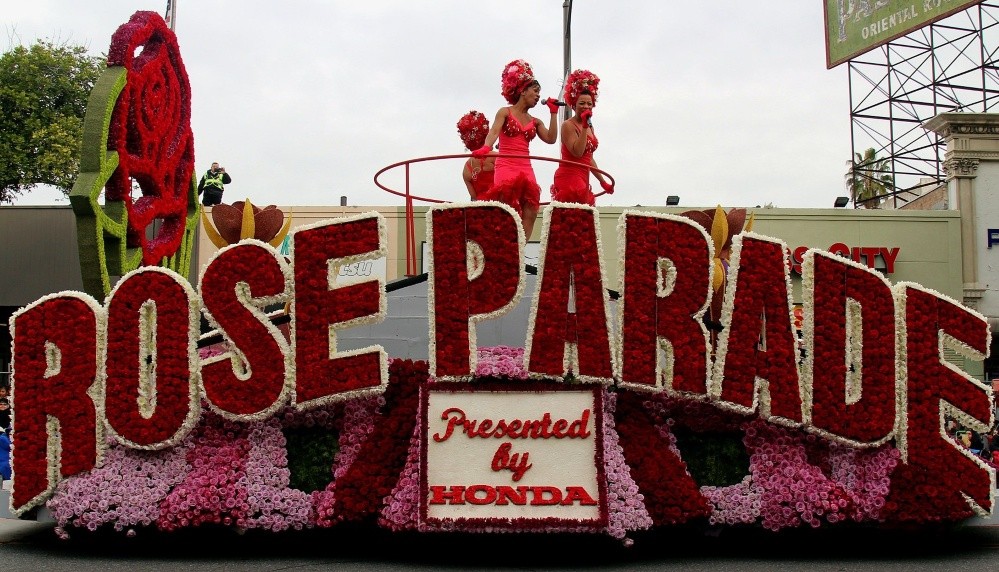Top 10 Oldest Bridges in the U.S - Still Standing Today
| Table of Contents |
The historical development of bridges in the United States mirrors the expansion and advancement of the nation. Bridges have played a crucial role in linking communities, promoting economic development, and safeguarding cultural heritage, spanning from early colonial constructions to contemporary engineering feats.
The majority of the oldest bridges in the United States remain intact, with some being original constructions and others being meticulously reconstructed replicas. These bridges symbolize both the historical significance of American engineering and innovation and the long-lasting nature and development of infrastructure over many centuries.
They function as vital links within their communities and as symbols of the nation's architectural and historical legacy. Every bridge conveys the narrative of the time period when it was constructed and the individuals responsible for its design and utilization, showcasing the evolving landscapes and technologies of the United States.
Presently, numerous ancient bridges are highly valued landmarks, drawing in tourists and functioning as reminders of America's engineering legacy. Contemporary bridges combine visual attractiveness with practicality, guaranteeing secure transportation while paying tribute to historical architectural styles.
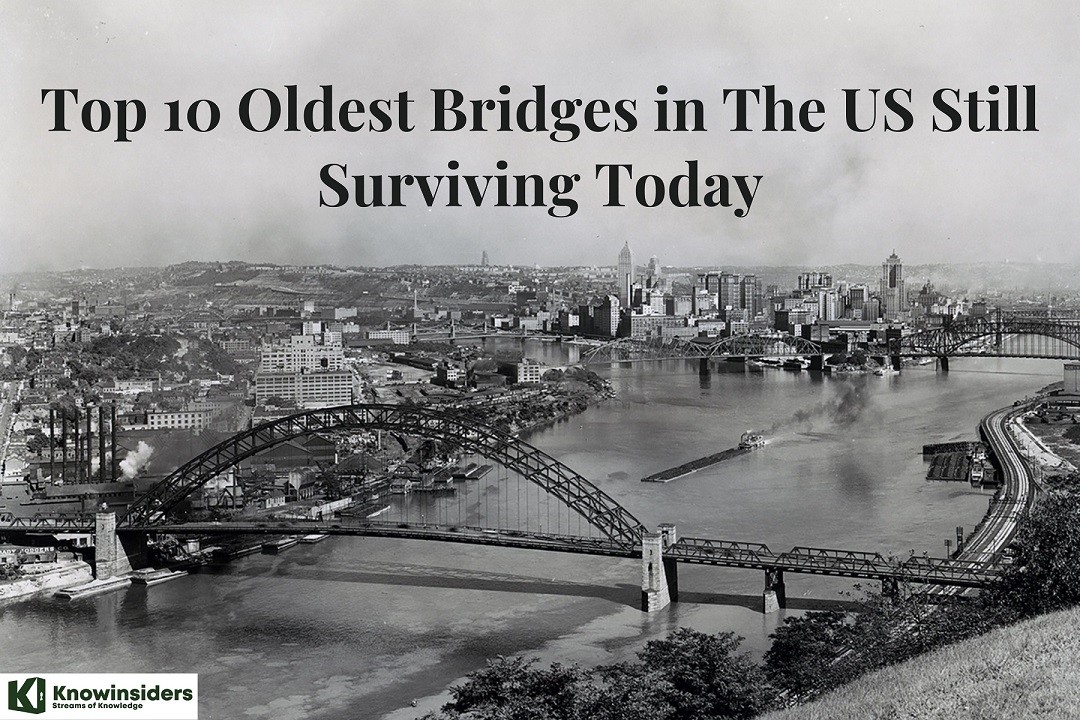 |
| Top 10 Oldest Bridges in The US Still Surviving Today |
Cultural Impacts of The Oldest Bridges in The US
The architectural styles and engineering methods of the time are reflected in the design and construction techniques of these early bridges, such as the utilization of stone arch designs in the Frankford Avenue Bridge. These bridges demonstrate advancements in construction technology.
Structures such as the Brooklyn Bridge (1883) in New York City, while not the most ancient, symbolize a remarkable feat in the fields of engineering and design, exerting a significant impact on bridge building globally.
Although relatively new, many historic bridges have become iconic landmarks in their respective cities, enhancing the cultural identity and visual allure of their surroundings. They frequently appear in art, literature, and photography, serving as symbols of their respective locations.
Historically, bridges have been essential in linking communities, promoting economic development, and enabling social interactions. By establishing crucial connections across rivers and other barriers, they facilitated the growth and establishment of towns and cities.
Historic bridges are a draw for tourists, educators, and history enthusiasts. They serve as valuable educational tools, providing valuable information about the technological and cultural aspects of the time periods in which they were built.
The ongoing presence and utilization of these bridges uphold a palpable link to the past, nurturing a feeling of uninterrupted flow and cultural legacy. They serve as a reminder to modern society of the resourcefulness and endeavors of past generations.
Top 10 Oldest Bridges in The US Still Standing
1. Frankford Avenue Bridge (1697) - Philadelphia, Pennsylvania
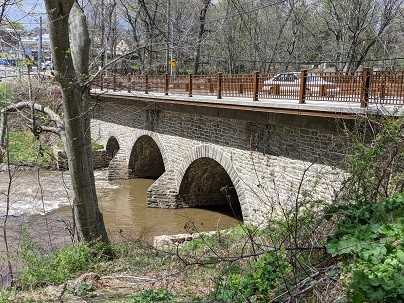 |
| Frankford Avenue Bridge |
Significance: Oldest stone arch bridge in the U.S.
Status: Still standing and in use.
Function: Connects Philadelphia to New York City over Pennypack Creek.
Historical Context: Built during colonial times, it has been in continuous use for over 300 years.
The Frankford Avenue Bridge, also known as the King's Highway Bridge, is the oldest stone arch bridge in the United States still in use. Located in Philadelphia, it was built in 1697.
As a stone arch bridge, it represents early American colonial engineering. Its construction utilized local stone and traditional masonry techniques.
The bridge was part of the King’s Highway, a major colonial road that connected Philadelphia to New York City, facilitating trade and travel between the two cities.
Despite being over three centuries old, the bridge has remained functional, a testament to its robust construction and historical preservation efforts.
The Frankford Avenue Bridge remains in active use, carrying vehicular traffic over Pennypack Creek. It is a cherished historical landmark, reflecting the longevity and durability of early American infrastructure.
2. Old North Bridge (1760) - Concord, Massachusetts
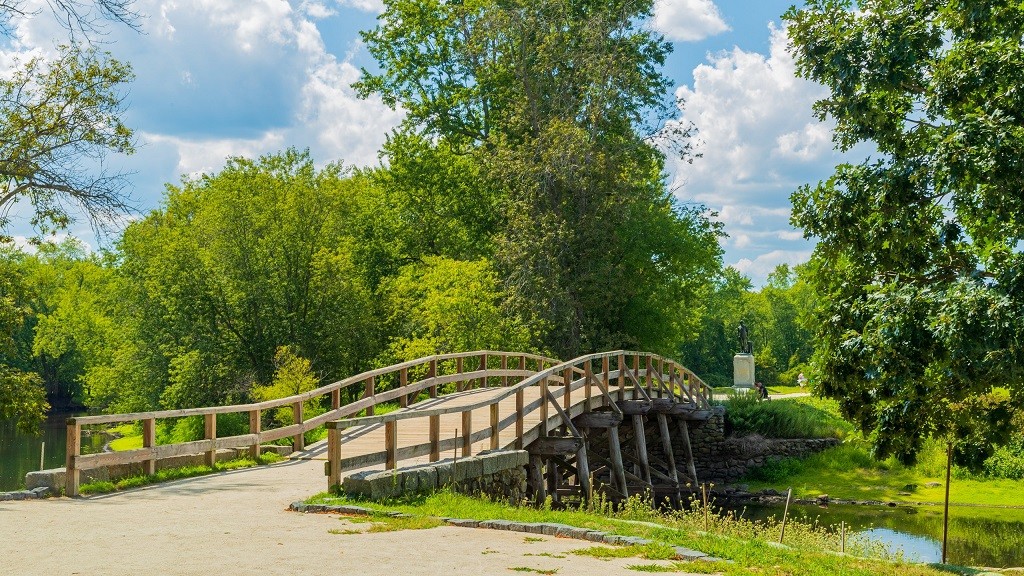 |
| Old North Bridge |
Significance: Site of the first battle in the American Revolutionary War.
Status: The original bridge no longer exists; a replica built in 1956 stands in its place.
Current Status: A 1956 replica of the original 1760 bridge.
Historical Context: Symbol of American independence and early resistance.
The Old North Bridge, originally built in 1760, is a wooden bridge in Concord, Massachusetts. It is most famous for its role in the American Revolutionary War.
The bridge was the site of the Battle of Concord on April 19, 1775, where colonial militiamen engaged British troops in what became one of the first military engagements of the war. This battle is famously commemorated by the phrase "the shot heard 'round the world."
The bridge stands as a symbol of American independence and resistance. It is an iconic landmark in the history of the United States.
The bridge has been depicted in numerous works of art, literature, and history, reinforcing its place in American cultural heritage.
The original 1760 bridge no longer exists; however, a historically accurate replica, built in 1956, stands on the original site. It is part of the Minute Man National Historical Park and attracts many visitors each year.
3. Poughkeepsie Bridge (1888) - Poughkeepsie, New York
 |
| Poughkeepsie Bridge |
Significance: Once the longest bridge in the world.
Status: Still standing, now known as the Walkway Over the Hudson.
Current Function: Now a pedestrian walkway known as the Walkway Over the Hudson.
Historical Context: Key railroad connection, showcasing late 19th-century engineering.
The Poughkeepsie Bridge, alternatively referred to as the Walkway Over the Hudson, was fully constructed in the year 1888. The structure extends across the Hudson River, connecting the locations of Poughkeepsie and Highland in the state of New York.
Upon its completion, the bridge held the record for being the longest in the world. The railroad bridge was crucial, as it enabled the transportation of goods and passengers over the Hudson River.
The construction of the bridge incorporated pioneering techniques involving steel and iron, which demonstrated the progress made in engineering and materials during the late 19th century.
The bridge was instrumental in the economic advancement of the area, as it linked major railway networks and facilitated industrial expansion.
Following its closure to rail traffic in 1974, the bridge underwent renovation and was subsequently reopened in 2009 as a pedestrian walkway and state park. The Walkway Over the Hudson, currently recognized as one of the longest elevated pedestrian bridges globally, has gained popularity as a prominent recreational and tourist attraction.
4. Eads Bridge (1874) - St. Louis, Missouri
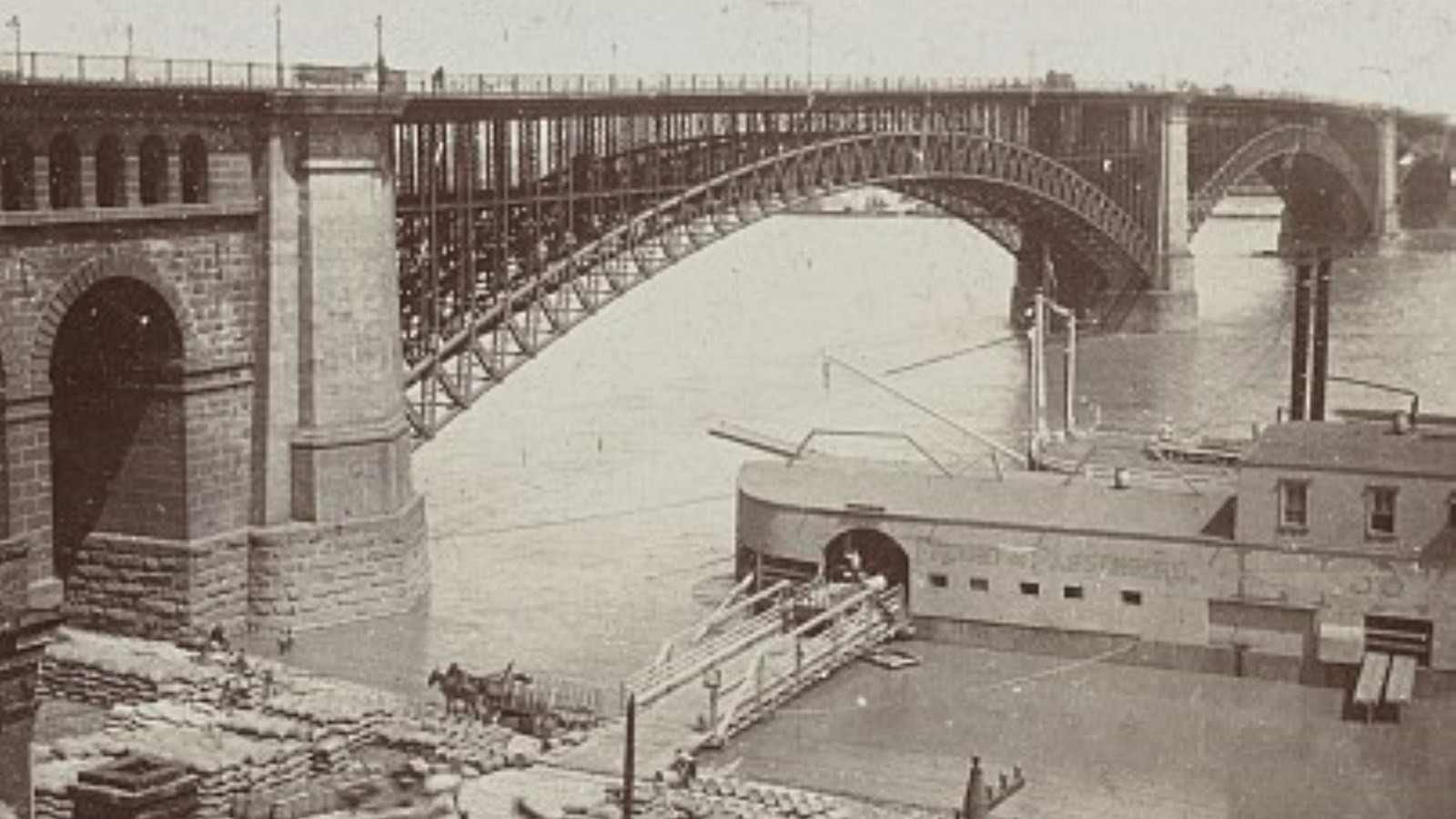 |
| Eads Bridge |
Significance: First bridge to use steel and cantilever support methods.
Status: Still standing and in use.
Function: Spans the Mississippi River, connecting Illinois and Missouri.
Historical Context: A pioneering structure in bridge engineering by James B. Eads.
The Eads Bridge, which spans the Mississippi River, connects St. Louis, Missouri, to East St. Louis, Illinois. Completed in 1874, it was an engineering marvel of its time and remains a significant landmark.
It was the first bridge to use steel extensively and the first to employ the cantilever support method. Its designer, James B. Eads, utilized techniques such as pneumatic caissons, which were revolutionary at the time.
The Eads Bridge remains in use today, carrying both vehicular and pedestrian traffic. It is celebrated for its historical and engineering significance and stands as a symbol of innovation and resilience.
 Top 10 Most Famous and Beautiful Bridges in the US Top 10 Most Famous and Beautiful Bridges in the US |
5. Brooklyn Bridge (1883) - New York City, New York
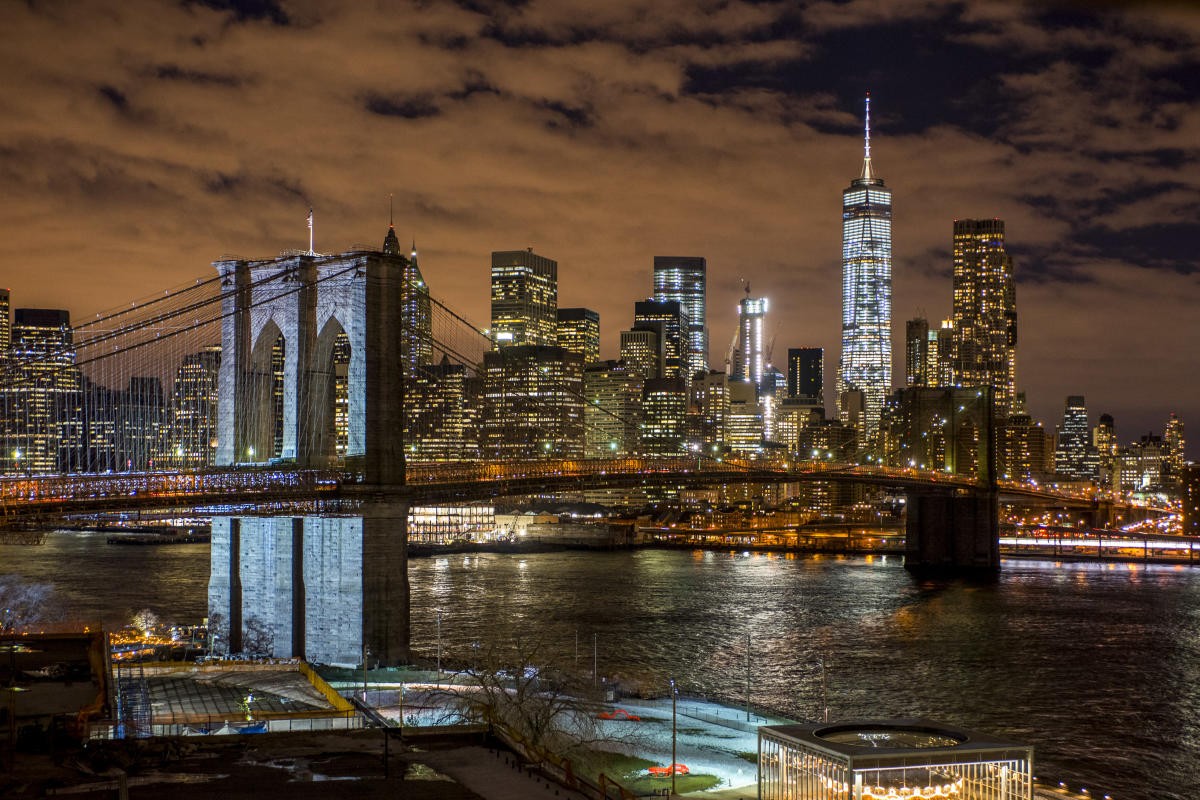 |
| Brooklyn Bridge |
Significance: Iconic suspension bridge symbolizing New York City.
Status: Still standing and in use.
Function: Connects Manhattan and Brooklyn over the East River.
Historical Context: Engineering marvel of its time, designed by John A. Roebling.
The Brooklyn Bridge, an iconic suspension bridge, connects Manhattan and Brooklyn over the East River. Completed in 1883, it was the longest suspension bridge in the world at that time.
Designed by John A. Roebling and completed by his son Washington Roebling after John's death, the bridge was one of the first to use steel wire for its cables. Its construction faced numerous challenges, including the development of caisson disease (decompression sickness) among workers.
The Brooklyn Bridge continues to serve as a vital transportation link, carrying vehicles, cyclists, and pedestrians. It is a National Historic Landmark and a popular tourist attraction, offering stunning views of the Manhattan skyline.
Read More: Top 10 Oldest Buildings in the US: Still Being Used Today
6. Zane’s Trace Y-Bridge (1814) - Zanesville, Ohio
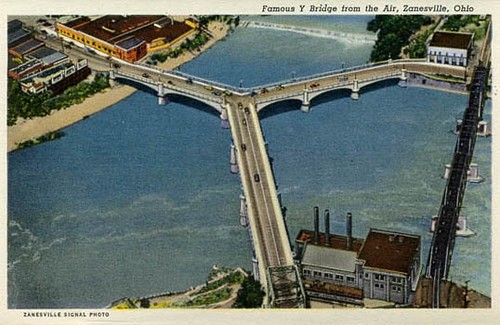 |
| Zane’s Trace Y-Bridge |
Significance: Unique Y-shaped design allowing three-way traffic.
Status: The original 1814 bridge has been replaced; the current structure is a 1984 reconstruction.
Function: Crosses the Muskingum River.
Historical Context: Innovative early American bridge design.
The Y-Bridge in Zanesville, Ohio, is unique for its Y-shaped design, allowing traffic to travel in three directions. The original wooden structure was built in 1814.
The bridge's unusual Y-shape was designed to cross the Muskingum River at a confluence point, providing a practical solution for the geographic challenges of the area. It is one of the few bridges of its kind in the world.
The original 1814 bridge has been replaced several times due to wear and flood damage. The current structure, built in 1984, maintains the unique Y-shape and continues to serve as a functional bridge and a historical landmark, highlighting the innovative spirit of early American infrastructure development.
7. Smithfield Street Bridge (1883) - Pittsburgh, Pennsylvania
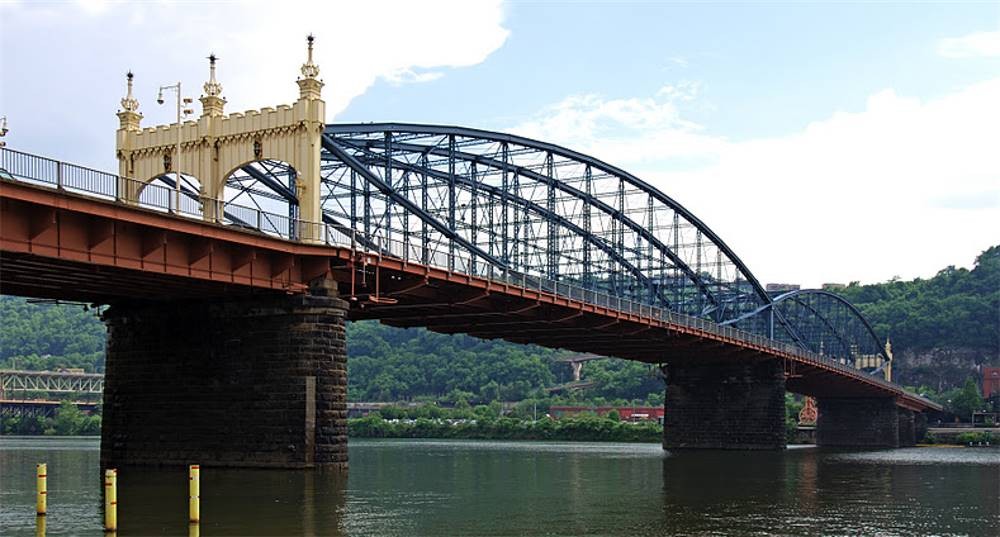 |
| Smithfield Street Bridge |
Significance: Oldest steel truss bridge in the U.S.
Status: Still standing and in use.
Function: Spans the Monongahela River.
Historical Context: Designed by Gustav Lindenthal, featuring a lenticular truss.
The Smithfield Street Bridge extends across the Monongahela River in Pittsburgh, Pennsylvania. Constructed in 1883, this bridge is among the earliest examples of steel truss bridges in the United States.
The bridge, created by Gustav Lindenthal, showcases a distinctive lenticular truss design that was groundbreaking during its era. This design offers a combination of visual attractiveness and effective structural performance.
The bridge was constructed to replace a previous wooden bridge and played a significant role in Pittsburgh's transition into a prominent industrial metropolis. It enhanced the transportation of individuals and commodities across the river, thereby bolstering the city's economic expansion.
The bridge is still in use today, serving both vehicles and pedestrians. The building has undergone multiple renovations to maintain its structural stability and historical authenticity.
8. Stone Arch Bridge (1883) - Minneapolis, Minnesota
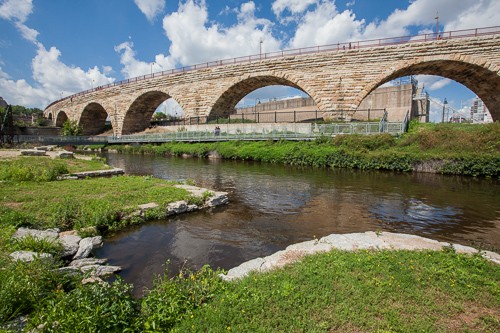 |
| Stone Arch Bridge |
Significance: Only stone arch bridge to serve as a railroad bridge.
Status: Still standing, now used as a pedestrian and bicycle path.
Function: Now a pedestrian and bicycle path over the Mississippi River.
Historical Context: Built by James J. Hill during the expansion of the railroad.
The Stone Arch Bridge extends across the Mississippi River at St. Anthony Falls in Minneapolis, Minnesota. The construction of this bridge was finalized in 1883, serving as a railway bridge commissioned by the Great Northern Railway.
This stone arch bridge is unique in that it was the sole railroad bridge across the Mississippi River. The structure consists of 23 arches constructed using locally sourced limestone and granite, demonstrating exceptional craftsmanship in masonry.
The bridge was instrumental in the advancement of the Minneapolis-St. Paul region by enabling the movement of goods and passengers, thereby fostering the area's industrial expansion.
The Stone Arch Bridge represents the city's industrial heritage and its association with the railroads that stimulated economic growth in the late 19th century.
The bridge has undergone a transformation from being exclusively used for rail traffic to now serving as a pathway for pedestrians and cyclists. The location is widely frequented for leisure activities, providing picturesque vistas of the river and St. Anthony Falls, and serves as a central gathering place during community events.
9. Benson Bridge (1914) - Multnomah County, Oregon
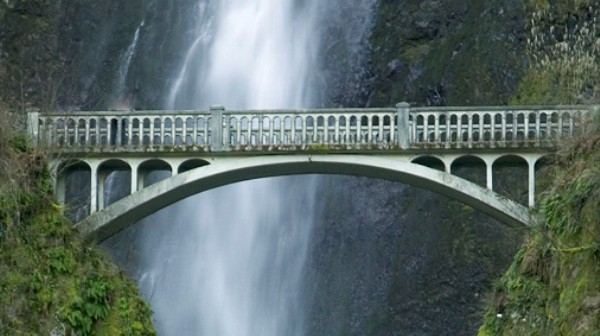 |
| Benson Bridge |
Significance: Scenic overlook of Multnomah Falls.
Status: Still standing.
Function: Pedestrian bridge in the Columbia River Gorge.
Historical Context: Example of early 20th-century engineering in a natural setting.
For people who want to walk, the Benson Bridge goes over the lower falls of Multnomah Falls in Oregon's Columbia River Gorge. It was finished in 1914 and paid for by a well-known local businessman named Simon Benson.
Multnomah Falls is one of Oregon's most famous natural sights, and the bridge gives you amazing views of it. It is located in a beautiful area that makes visiting the falls more enjoyable.
The bridge, which is made of reinforced concrete, blends in with the natural landscape. This shows how environmentally-friendly design ideas were in the early 1900s.
Along with the Benson Bridge, Multnomah Falls is a popular tourist spot that sees millions of people every year. From the bridge, people can see the falls from a higher level, getting a better view of them.
The Benson Bridge is still an important part of the Multnomah Falls site because it lets people get there and makes the natural beauty of the area even better. As part of the Columbia River Gorge National Scenic Area, it has been taken care of and kept safe.
10. Blenheim Bridge (1855) - Schoharie, New York
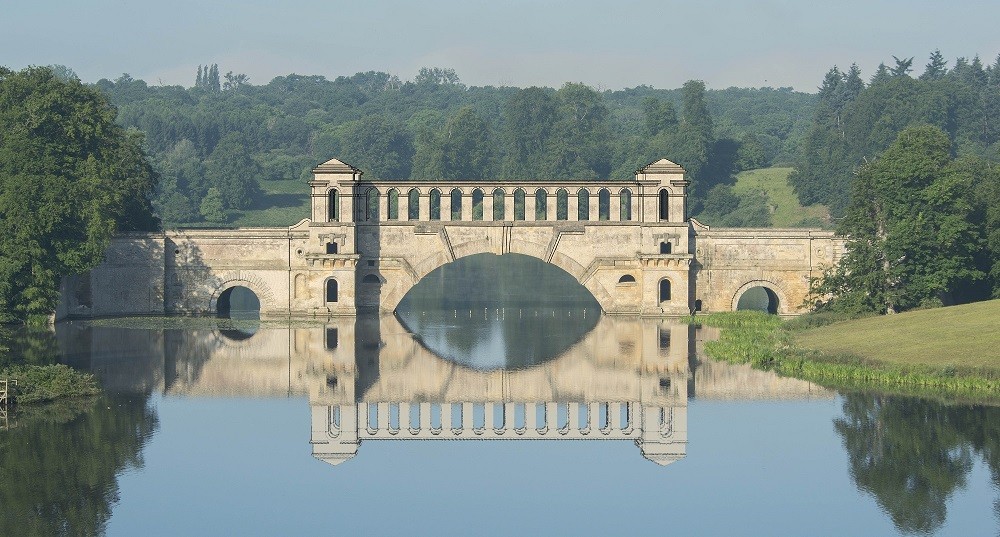 |
| Blenheim Bridge |
Significance: One of the longest single-span covered bridges.
Status: The original bridge was destroyed in 2011; a replica completed in 2018 now stands.
Current Status: The original was destroyed in 2011, replica was completed in 2018.
Historical Context: Reflects mid-19th-century covered bridge construction.
The Blenheim Bridge was a long covered bridge with only one span that crossed Schoharie Creek in Blenheim, New York. There were a lot of them when it was built in 1855.
At 232 feet, it was one of the world's longest single-span covered bridges. It showed how creative and skilled American bridge builders were in the middle of the 1800s.
In the United States in the 1800s, wooden-covered bridges were common to keep the wood from getting damaged by the weather. This bridge was a great example of this style.
It was an important landmark in the area because it showed how transportation has changed and grown in rural New York over time.
Heavy rains from Hurricane Irene in 2011 destroyed the first Blenheim Bridge. But in 2018, a copy was finished that kept the design and historical importance of the original building. The new bridge is a historical landmark that reminds us of the cultural and architectural history of the old one.
Conclusion
These bridges represent significant milestones in American engineering and history. From colonial stone arches to 19th-century steel marvels, they highlight the technological advancements and cultural heritage of the United States. Each bridge not only facilitated transportation and commerce but also became a testament to the ingenuity and perseverance of its time.
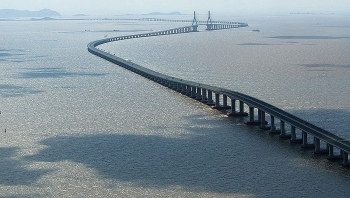 Top 7 Longest and Breathtaking Bridges in The World Today Top 7 Longest and Breathtaking Bridges in The World Today If you enjoy architectural marvels, you should look into the top seven longest bridges in the world. |
 Top 10 Most Breathtaking Bridges in the World Top 10 Most Breathtaking Bridges in the World Bridges have a way of captivating us, from ancient stone spans to sweeping modern suspensions. Check out the world's top ten most beautiful bridges! |
 Top 10 Most Famous and Beautiful Bridges in the US Top 10 Most Famous and Beautiful Bridges in the US Bridges are symbols of innovation and beauty in American architecture and engineering, which is constantly changing. Tourists and design enthusiasts from around the world visit ... |


